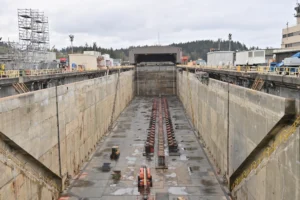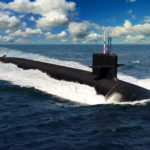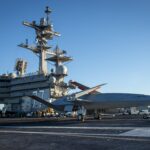
Top Navy officials this week told congressional panels repairs to dry docks at the Puget Sound Naval Shipyard and Intermediate Maintenance Facility (PSNS & IMF) in Bremerton, Wash., and the delta pier at the Trident Refit Facility (TRF) in Bangor, Wash., related to seismic concerns are expected to be finished by June. Previously, in January the Navy announced four dry docks were being closed due to concerns they could not withstand earthquakes following a seismic assessment as part of the…

 By
By 










